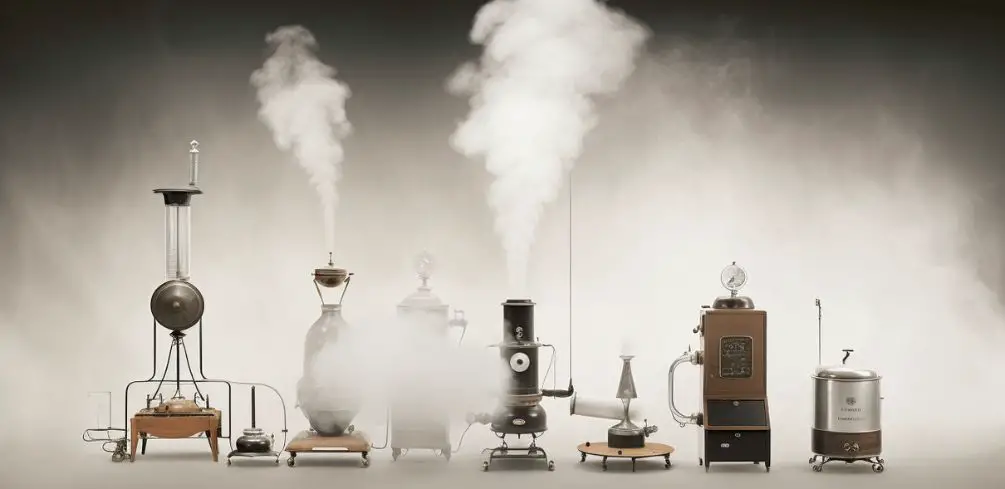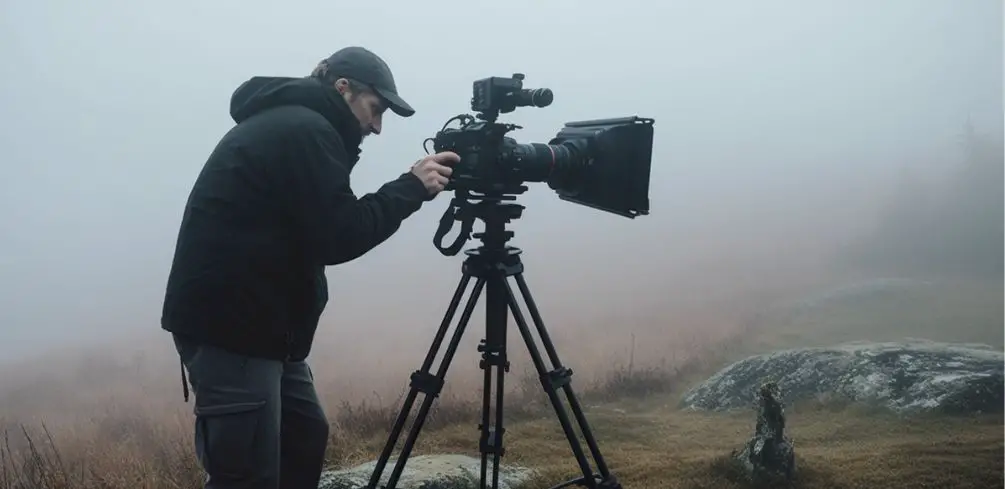Imagine stepping into a theater and being instantly transported to a mysterious, eerie world, with fog swirling around your feet and creating an atmosphere of suspense. You’ve just experienced the magic of fog machines, which have played an integral role in theatrical productions for centuries.
In this article, you’ll get a chance to delve into the fascinating history of these machines – from their early origins on stage to breakthrough innovations in fog production technology. But that’s not all!
As we journey through time, you’ll also discover how advancements in fog machine technology have expanded their applications beyond theaters and into various industries such as film, theme parks, concerts, and even firefighting training.
Early Theatrical Origins
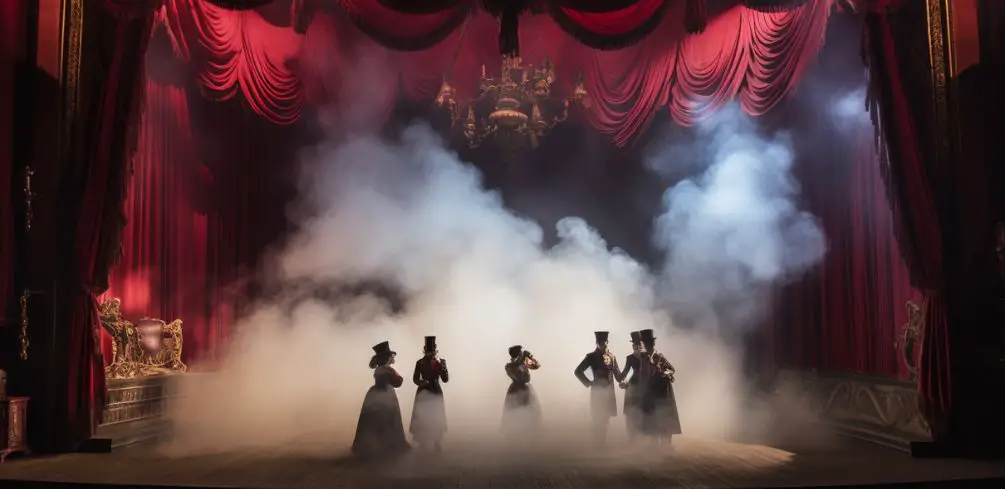
Back in the day, theatrical productions didn’t have fancy equipment, yet they still managed to create captivating effects on stage. Ancient techniques of Greek origins laid the foundation for atmospheric stage effects that would evolve over time.
Roman innovations took these early concepts and expanded upon them, adding new elements such as hydraulic systems to create waves or even flooding the stage for dramatic scenes.
During the Renaissance period, fogs were often used in plays and performances to set a mysterious mood or represent otherworldly locales. This was achieved by burning various materials like wet straw or damp wood with fragrant leaves in order to produce thick smoke with a distinctive aroma.
The Baroque era brought about more elaborate spectacles, further exploring the use of foggy atmospheres in combination with intricate sets and costumes to transport audiences into fantastical realms.
As theatrics continued to evolve through history, so too did methods of creating unforgettable experiences on stage. It’s fascinating to see how far we’ve come since the days of Greek origins and Roman innovations when it comes to producing immersive environments on stage.
From Renaissance fogs and Baroque spectacles up to today’s modern fog machines, each step along this journey has contributed something unique and valuable toward creating memorable theatrical experiences that captivate audiences around the world.
Breakthrough Innovations in Fog Production
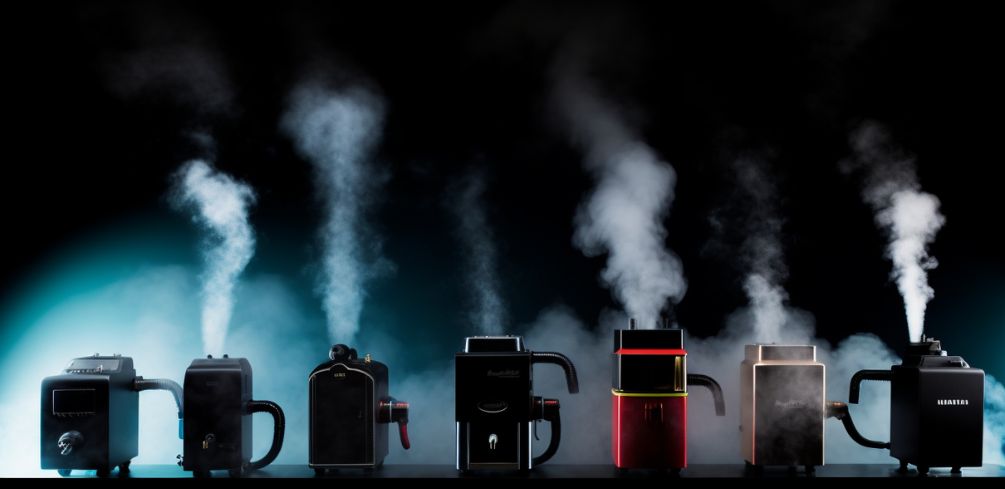
As you delve into the misty world of breakthrough innovations, let the clouds of creativity envelop your mind and spark a newfound appreciation for the art of fog production.
The evolution of fog machines has been marked by significant advancements in chemical formulations, iconic performances that showcased their capabilities, safety improvements to protect performers and audiences alike, and eco-friendly alternatives that cater to environmentally conscious artistic expressions.
- Chemical Formulations: Early fog machines relied on heavy mineral oils or glycol-based solutions, which could be harmful when inhaled. Modern fog fluids have evolved to use water-based mixtures with food-grade ingredients, making them safer while still producing remarkable atmospheric effects.
- Iconic Performances: From classic rock concerts like Pink Floyd’s legendary laser-filled shows to groundbreaking theatrical productions such as Andrew Lloyd Webber’s ‘Phantom of the Opera’, these awe-inspiring performances helped push the boundaries of what was possible with fog technology.
- Safety Improvements: As our understanding of health risks associated with certain chemicals grew, so too did efforts to ensure the safety of both performers and audience members. This led to innovations like better ventilation systems, automatic shut-off mechanisms when fluid levels run low, and temperature controls for preventing burns from overheated devices.
- Eco-Friendly Alternatives: With an increasing focus on sustainability within the entertainment industry, manufacturers have developed greener options for fog production. These include biodegradable fluids made from renewable resources and energy-efficient machines that consume less power during operation.
Though it may seem like a simple effect at first glance, delving deeper into this fascinating field reveals how much innovation has gone into perfecting those wisps of ethereal vapor that can transform any performance space into a magical realm filled with mystery and wonder.
From humble beginnings in early theater productions to modern-day spectacles featuring dazzling displays of light and color amidst swirling mists, the history of fog machine innovations is a testament to the enduring power of human creativity and our collective desire for immersive and captivating experiences.
So, let’s let our imaginations soar as we continue exploring this fascinating world of breakthrough innovations in fog production.
Advancements in Fog Machine Technology

You’re now diving into the realm of advancements in fog machine technology, where cutting-edge innovations continue to redefine and enhance the way we experience atmospheric effects in live performances.
Portable foggers have become increasingly popular for their ease of use and ability to create dynamic visual effects on the go. These compact devices allow event organizers, performers, and enthusiasts alike to bring a taste of theatrical magic with them wherever they go.
Eco-friendly solutions are also gaining traction as more people prioritize sustainable practices; this includes using water-based fog fluids that minimize environmental impact while providing impressive visual displays.
Fog fluid varieties have expanded to meet the diverse needs of users, offering options such as low-lying fog for eerie graveyard scenes or high-density bursts for stunning concert backdrops. This range allows for greater creativity and customization when designing atmospheric effects for various events and venues.
Digital control systems are another significant advancement in fog machine technology, enabling precise control over timing, output levels, and even synchronizing multiple machines together.
This level of precision ensures seamless integration into live performances without detracting from the overall experience.
Customizable fog effects can transform ordinary events into immersive experiences that captivate audiences and make lasting impressions. With so many innovative features available today, it’s never been easier or more exciting to experiment with new ways to elevate your productions through atmospheric enhancements.
As you explore these advancements further, you’ll undoubtedly discover even more possibilities waiting just around the corner as technological developments continue to push the boundaries of what’s possible in creating an unforgettable ambiance with the power of fog machines.
Modern Applications and Uses
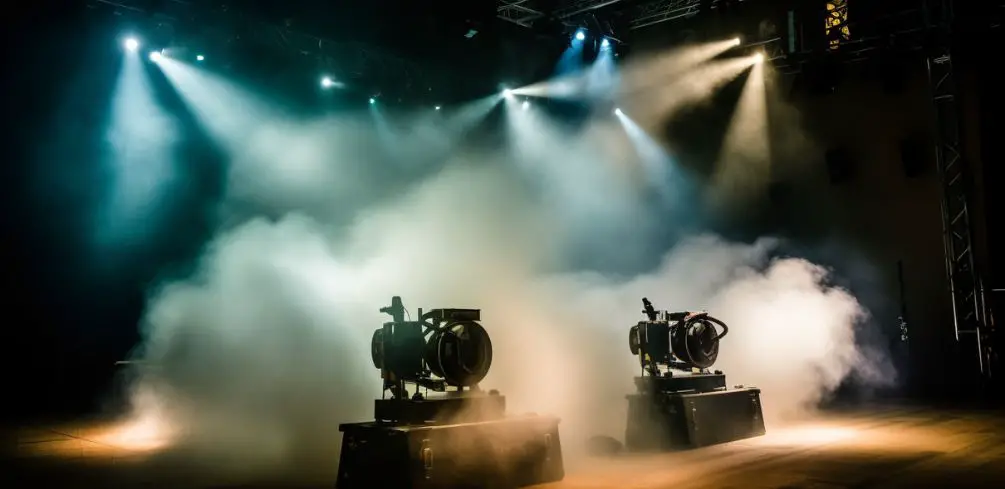
It’s truly amazing how modern applications and uses of these devices have transformed the way we experience events, making every moment feel all the more magical and memorable.
From smoke simulation in disaster training to laser displays at concerts or festivals, fog machines play a crucial role in creating realistic and immersive environments.
They also contribute to safety preparedness by simulating various scenarios where visibility is limited due to smoke or haze, allowing first responders or military personnel to practice their tactics under such conditions.
Another noteworthy application of fog machines is in air purification systems. By producing fine mist that can effectively trap particulate matter and contaminants present in the air, these devices help improve indoor air quality significantly.
This feature makes them especially useful for spaces like museums, galleries, laboratories, or any other environment where maintaining pristine air quality is essential.
The ability to control particle size allows for the targeted removal of specific pollutants, further enhancing their effectiveness as purifiers.
In addition to entertainment and practical purposes mentioned above, fog machines have found a place in military tactics as well. They are often used as an effective means of creating concealment during operations or training exercises by generating large volumes of dense fog quickly.
This obstructs enemy vision and provides cover for troops on the move while confusing adversaries’ tracking systems.
As technology continues to advance, it’s exciting to see how innovative uses for fog machines will keep emerging across various industries – adding an element of awe-inspiring wonder wherever they go.
Future Developments and Trends
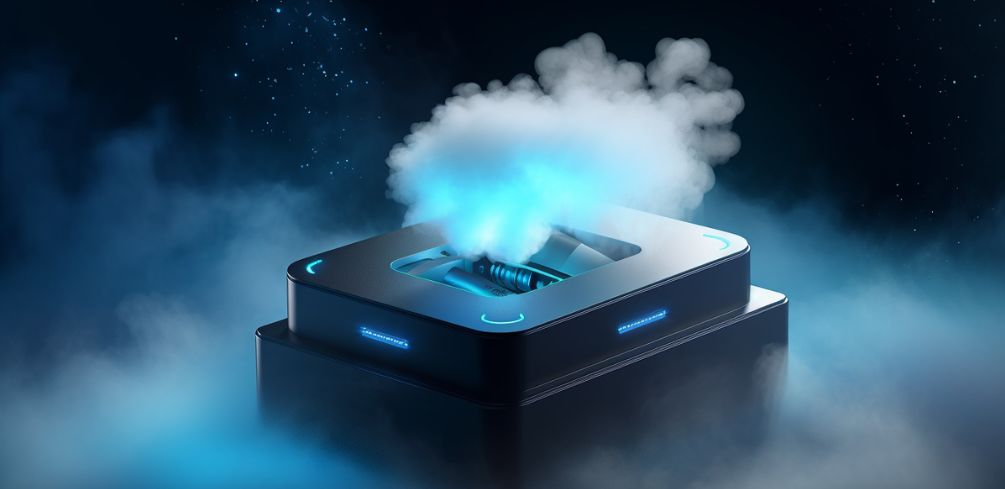
Imagine the endless possibilities and innovations that lie ahead in the world of fog machines, as we witness a constant evolution of technology and creativity.
One area of development we can expect to see is the implementation of eco-friendly solutions in fog machine design. This could include more energy-efficient devices, lower consumption of fog fluid, or even an exploration of alternative, environmentally friendly fluids for generating fog.
Moreover, customizable fog options may emerge with adjustable density and color for diverse applications like entertainment events, immersive experiences, theme parks, or emergency training scenarios.
Another significant trend to watch out for is IoT (Internet of Things) integration into fog machines. As more devices become connected and controllable through networks or smartphones, your future fog machine might have capabilities beyond just producing haze.
For example, it could be integrated with other smart devices to create synchronized effects during a live show or remotely controlled according to user preferences on a mobile app. Portability will also become increasingly important as users demand smaller form factors for easy transportation and deployment at various events.
Enhanced safety features are another aspect where improvements will likely surface. Given that some modern-day concerns regarding fog machines include potential fire hazards or health issues due to prolonged exposure to certain types of chemicals in the fluid used by these devices, manufacturers are continually seeking ways to address those concerns effectively.
Future designs may incorporate advanced sensors capable of detecting overheating or other malfunctions before they escalate into serious problems; furthermore, research into safer alternatives for chemical components could also lead to innovations within this field!
As technology progresses and creative minds continue pushing boundaries in developing novel applications for these versatile tools – from theater productions to disaster simulations – there’s no doubt that we’re on the brink of an exciting new era in the history of fog machines!
Frequently Asked Questions
How has the use of fog machines impacted environmental and public health concerns over time?
As a magician unveils a trick, so too has the use of fog machines revealed environmental and public health concerns over time.
Fog machine pollution, once an afterthought in the pursuit of atmospheric effects, has become increasingly scrutinized as its impact on both humans and wildlife surfaces.
Allergy concerns have risen among individuals exposed to the artificial haze, prompting event organizers to seek sustainable alternatives that minimize harm while maintaining ambiance.
The ripple effect extends beyond human attendees; our feathered and furry friends also experience distress due to changes in air quality brought about by these theatrical devices.
Public health awareness campaigns now shine a spotlight on this often-overlooked issue, encouraging everyone from concert-goers to theater enthusiasts to play their part in mitigating harm caused by fog machines – all for the sake of preserving our environment’s delicate balance and safeguarding those who inhabit it.
Were there any notable accidents involving fog machines throughout their history?
You might be curious about fog machine mishaps and if there have been any unusual explosions or fire safety incidents involving them.
While accidents with fog machines are relatively rare, there have been some notable malfunction stories that led to performance disruptions.
For instance, in 2013, a theater production in London was halted due to a malfunctioning fog machine that caused excessive smoke, requiring evacuation of the venue.
Another incident occurred during a Halloween event at an amusement park when a fog machine caught fire, leading to panic among visitors.
Although these cases are exceptions rather than the norm, they serve as reminders of the importance of proper maintenance and adherence to safety guidelines when using fog machines.
How have fog machine manufacturers adapted to different regulations worldwide?
As you navigate the international market of fog machines, you’ll discover how manufacturers have skillfully adapted to global regulations and diverse preferences through cultural adaptations and fog customization.
These companies understand that each country has its own unique set of rules and expectations, so they invest time and effort into researching local requirements while also considering various aesthetic tastes.
By doing this, they are able to create a versatile range of products that cater to different cultural needs, ensuring their fog machines can be safely used and enjoyed by people all around the world.
This attention to detail not only expands their market reach but also satisfies your subconscious desire for understanding as you explore the fascinating world of fog machines tailored for a global audience.
What are some niche applications of fog machines outside of the entertainment industry?
You might be surprised to learn that fog machines have a variety of lesser-known applications beyond the entertainment industry.
In military training, they’re used to create realistic battlefield conditions for immersive exercises.
Agricultural applications include pest control and crop protection, where fog machines distribute pesticides more evenly across crops.
Leak detection is another area where these devices prove invaluable; by generating smoke, they can help pinpoint leaks in pipes and other systems.
Additionally, fog machines are utilized in alternative fuel research to simulate various combustion environments for testing purposes.
Lastly, fire safety simulations often employ fog machines to mimic smoke-filled scenarios during emergency drills, ensuring better preparedness for real-life situations.
How have artists experimented with fog machine aesthetics in performance art pieces?
As the mist rolls in like a scene from Macbeth, foggy artistry takes center stage in various immersive installations and experimental performances.
Artists and designers have harnessed the atmospheric design capabilities of fog machines to create ephemeral creations that evoke a sense of mystery and wonder.
From transforming spaces into ethereal landscapes to setting the mood for avant-garde theatrical productions, these innovative visionaries push the boundaries of what’s possible with this versatile medium.
By manipulating light, color, and texture within their works, they craft unforgettable experiences that not only captivate audiences but also challenge our preconceived notions of reality.
So next time you find yourself immersed in a cloud of billowing mist, take a moment to appreciate the artistic mastery behind it all – you just might stumble upon an unexpected revelation.
Conclusion
So, you’ve journeyed through the misty history of fog machines, from their early theatrical origins to breakthrough innovations and modern applications. It’s clear that these devices have come a long way and continue to evolve with time.
As the saying goes, “Necessity is the mother of invention.” With advancing technology and growing demands in various industries, there’s no doubt that we can expect even more exciting developments in fog machine technology in the near future.

